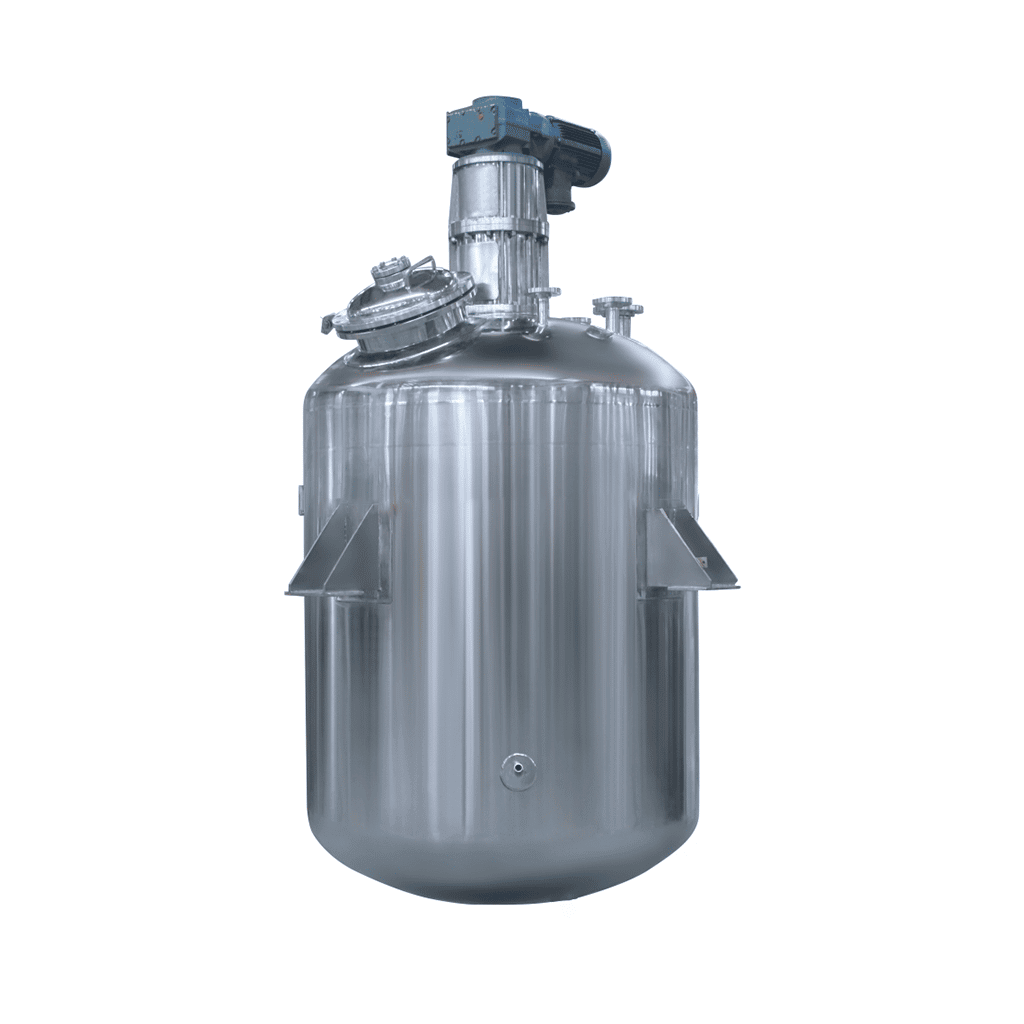
-24-1.jpg)
Stainless Steel Reactor
Stainless Steel Reactor: used in dairy products, sugar, beverages, and other fields
Material
stainless steel (316, 304)
Capacity (L)
10-10000+
Mixing system
anchor, paddle, frame and others
Heating system
electric heating, oil heating and others
A stainless steel reactor is a stainless steel container equipment. The stainless steel reactor consists of a kettle body, a kettle lid, a stirrer, a jacket, a bracket, a transmission device, a shaft seal device, etc. Materials and openings can be made according to user needs and process requirements. Stainless steel reactors are mainly used for stirring, homogenizing, and mixing storage of dairy products, sugar, beverages, food, and various pharmaceuticals.
Request a quoteTheir basic characteristics are described as follows
The stainless steel reactor has basically the same structure. In addition to the reactor, there are also transmission devices, stirring and heating (or cooling) devices, etc., which can improve the heat transfer conditions, make the reaction temperature control more uniform, and do not strengthen the mass transfer process.
Stainless steel storage tanks, as the name suggests, are tanks made of stainless steel welded. Generally speaking, stainless steel storage tanks should have high airtightness and strong corrosion-resistance, which puts forward higher requirements for the production technology and welding process of stainless steel storage tanks. So, what is the welding process for stainless steel storage tanks?
As we all know, there are many kinds of stainless steel welding processes, and the welding quality of each is also good. However, in the production of stainless steel storage tanks, argon arc welding is the most used, and it is generally welded by hand. In argon arc welding, we need to use a small current, fast welding speed, short arc narrow pass welding, and control the temperature between the control layers to be below 100 degrees. Of course, the welding materials used should also be matched, otherwise, it will affect the welding. Effect.

Operating pressure of stainless steel reactor
The operating pressure of the stainless steel reactor is relatively high. The pressure in the kettle is generated by a chemical reaction or formed by a temperature increase, the pressure fluctuates greatly, sometimes the operation is unstable, and the sudden pressure rise may exceed several times the normal pressure. Therefore, most the reactors are pressurized vessels.
Factors that cause the stainless steel reactor to stick to the wall
1. Raw material factors Because the sulfate content in urea is too high, adding urea in the late stage of the polycondensation reaction of the resin is equivalent to adding a curing agent, which promotes the rapid cross-linking of the resin into a network structure. If not treated in time, the resin will cure in the reactor. Therefore, standard industrial urea raw materials should be selected in production, and the sulfate content in urea should be limited to less than 0.01%.
2. When the glue-making process indicators such as temperature and pressure are unstable or the fluctuation is too large, the polycondensation process of the resin is not uniform, which is easy to cause sticking to the wall. Therefore, during production operations, pressure and temperature should be slowly increased. Generally, water vapor of about 0.15Mpa is introduced for 2 to 3 minutes, and then the pressure is slowly increased to heat up. The lifting speed should be 0.1 ~ 0.15 MPa per minute.
3. The temperature of the cooling medium in the temperature difference of the kettle wall is too low or suddenly decreases, so that the temperature difference between the kettle wall and the material is too large, resulting in the glue contacting the stainless steel reactor wall sticking to the wall. Therefore, both heating and cooling should be carried out within a reasonable temperature difference. The use temperature of steam should generally be less than 180℃, the thermal shock of temperature difference should be less than 120℃, and the cold shock should be less than 90℃. At the same time, attention should be paid to determining the appropriate cooling medium inlet and outlet temperatures to maintain balanced operation.
4. Reaction temperature and time When the temperature of the reaction solution is lower than 80℃, if ammonium chloride is used as a catalyst, the pH value cannot be displayed due to the fast reaction speed of ammonium chloride. When the temperature rises, the pH value drops rapidly, the reaction speed increases, and the polycondensation reaction is too intense, resulting in gel and sticky walls. In addition, the polycondensation reaction time is too long, the molecular weight of the resin is large, the viscosity is too high, and it is easy to stick to the wall. Therefore, the temperature and time of the polycondensation reaction should be properly controlled, and the reaction should be terminated in time. Generally speaking, the temperature of the reaction solution should be controlled to 95°C.


